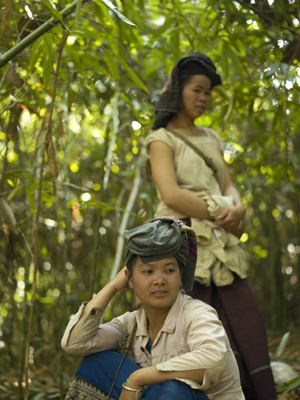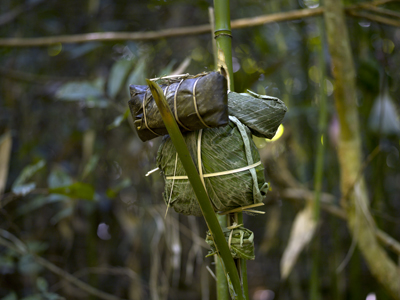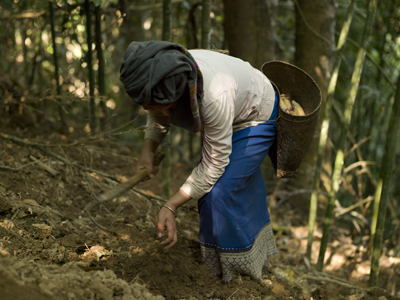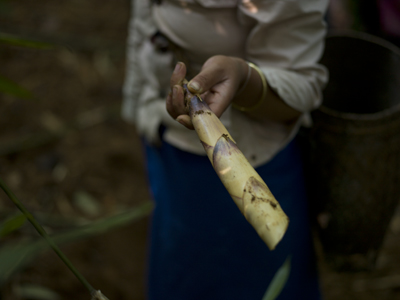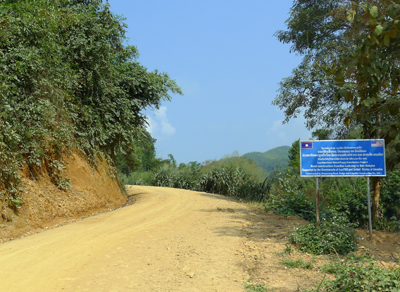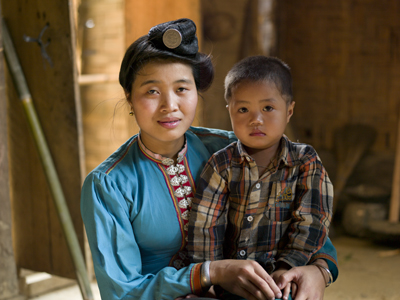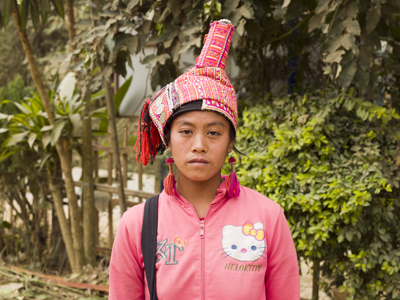Bitter bamboo shoots
By Tessa Bunney on 31 January 2013Just arrived back from a few days up north. First went back to Ban Na Mor to see the market and its seasonal products, there were a few new and different things including a scary giant mole. But the dominant product by far was Nor Khom – the bitter bamboo shoot.
Forest foods are still very important for the mainly rural population of the Lao PDR and many local people consider edible bamboo shoots to be the most important product of all. While most bamboo shoots are harvested and consumed in the rainy season (May-September), the species Indosasa sinica (bitter bamboo, or Nor Khom in Lao), found mainly in northern Laos, provides shoots that can be harvested in the dry season (January-April). This off-season product provides market opportunities for local communities, such as Ban Nam Mor, which are close to the border with China.
Since my last visit in November the market itself has had a complete new makeover with a new metal roof and tables. However, the main purpose of visiting was to find a willing volunteer from the village to take me to photograph the collecting of Nor Khom, which we were easily able to do. So the next day we went to the forest with Nou and her friends from Ban Na Kham, her home village before she was married to someone from the nearby Ban Na Mor.
We joined the vast band of women and a few children as they trekked along the dusty road, through the paddy fields, and up into the bamboo forest. Now, I’ve often thought my ideas are a bit beyond my physical capabilities… however I’ve not actually had to give up yet and as usual I did manage with a bit of difficulty to scramble up the near vertical, muddy path into the forest. The terrain then flattened out a little as we reached the bamboo forest and left our lunches at a small clearing – the villagers’ food all wrapped up beautifully in leaves.
I then spent a few hours with the women as they, lets face it, devastated the forest floor as they dug down at the base of the bamboo looking for shoots. I had always thought that bamboo shoots were cut as they surfaced the earth. Whilst the women go out collecting shoots every day for several months, it will be a week before they will return to this area again.
After a night in Oudomxay we then prepared to spend 3 days exploring the south of Phongsaly – we took a new route to Sivongxay (my guide and driver), a small dusty dirt road snaking through the mountains – home to mainly Akha Loma villages. The road was built in an attempt to control the opium growing in this area by providing the villages with an access to markets and an alternative income through rubber.
The first village we stopped at was a beautiful Tai Dam village at the bottom of the valley where we met Laep and her family.
Whilst it’s always delightful to discover women wearing their traditional clothing on a daily basis I am also excited when I meet yet another Akha woman sporting the latest in Chinese ‘Helo Kitty’ clothing!
Despite the relatively good condition of the road, as we discovered the following day when it randomly rained in the middle of the dry season, these villages are still pretty inaccessible by vehicle for a large part of the year.
